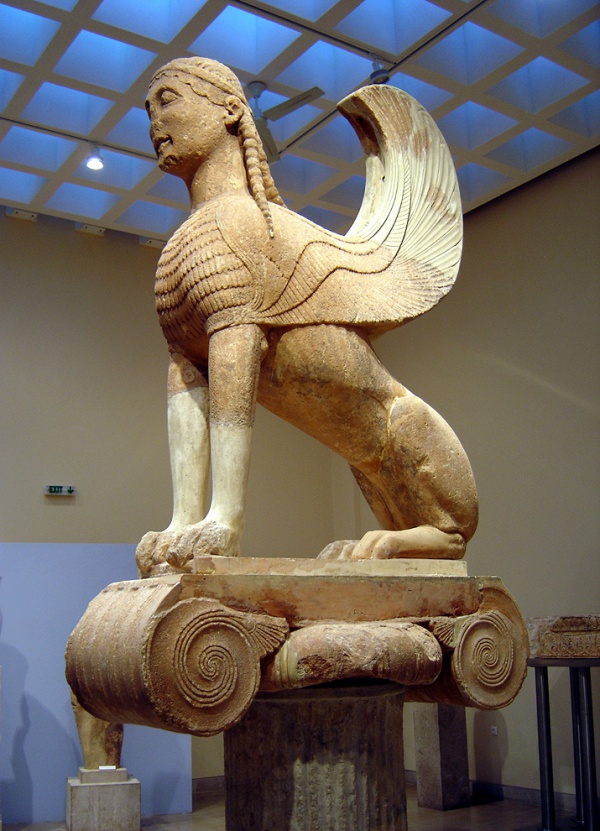Facts About Sphinx of Naxos
The Sphinx of Naxos, also known as the Sphinx of the Naxians, is a magnificent marble statue housed in the Archaeological Museum of Delphi. Standing at an imposing 2.22 meters tall, this colossal sculpture features the head of a woman, the body of a lioness, and intricately crafted wings. Erected around 560 BCE, the statue originally stood beside the Temple of Apollo in Delphi, a significant religious center in Ancient Greece.
The story of the Sphinx of Naxos is captivating. Excavations commenced in 1860, but it was not until 1893 that remaining fragments were uncovered. The statue was a gift from the island of Naxos to the Temple of Apollo. In Greek mythology, the sphinx symbolizes strength and protection, often depicted as guardians at the entrances of temples and royal tombs.
What makes this statue even more remarkable is its original placement on a 10-meter-high column topped with an Ionic capital, making it one of the earliest examples of Ionic architecture at the Oracle of Delphi. Carved from Naxian marble, the Sphinx of Naxos features meticulous details and a dynamic presence. Unlike many sculptures of its time, it was carved in the round, meaning it was fully three-dimensional rather than a relief.
An interesting detail is the inscription on the statue's base, dated to 328-327 BCE, which reaffirmed the Naxians' right to receive oracles first. Similar columns with sphinxes have been found throughout ancient Greece, some serving as funerary markers. There are even theories that these 6th-century BCE Greek columns may have influenced the pillars of Ashoka in 3rd-century BCE India, facilitated by cultural exchanges initiated by Alexander the Great and continued by the Greco-Bactrians and Indo-Greeks.

 North Macedonia
North Macedonia